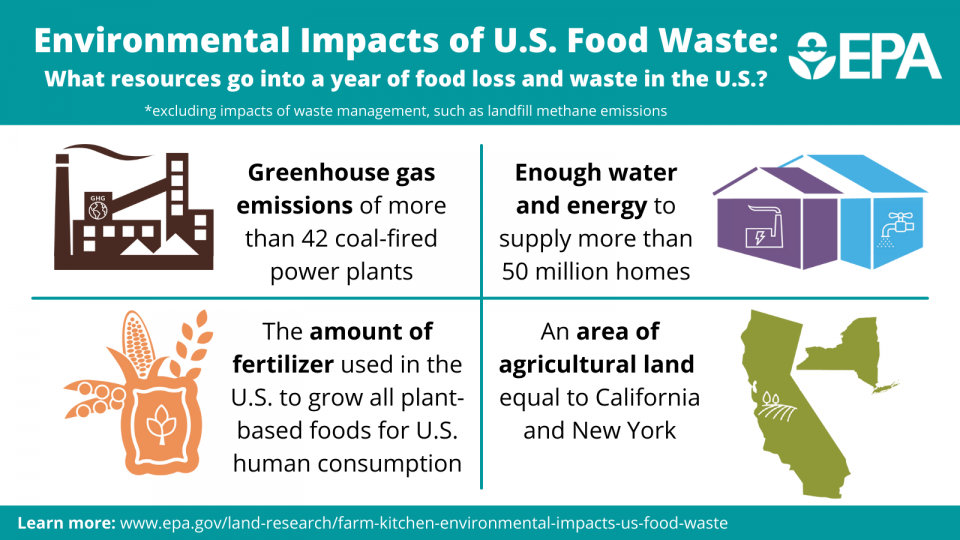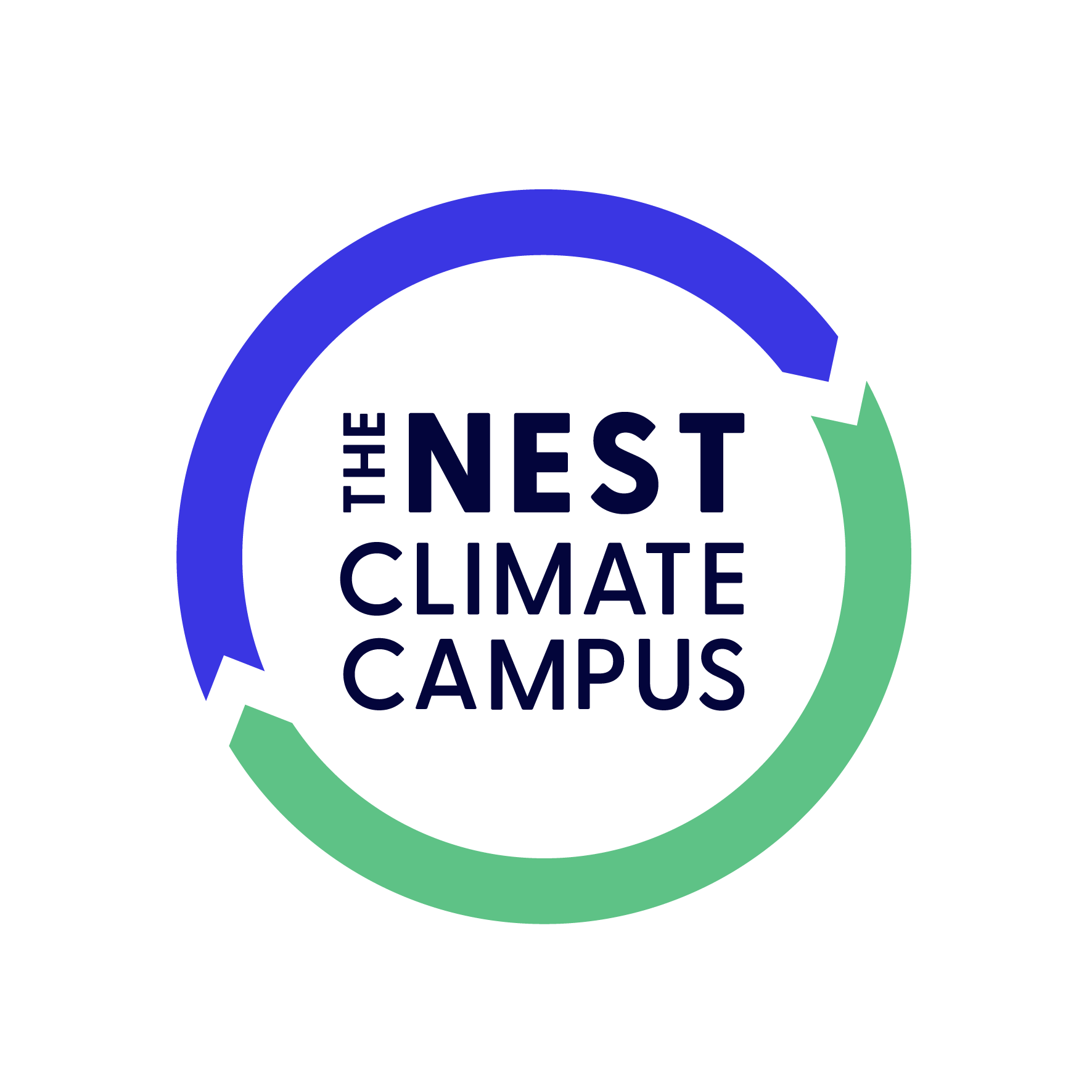The Connection Between Food Waste and Sustainability
Every year, the United States discards over 40% of its food supply, resulting in a staggering 125-160 billion pounds of wasted food. This not only represents a loss of valuable nutrients, but also exacerbates food insecurity for the 42 million people in the U.S. who struggle to access adequate nutrition. Furthermore, food loss and waste has significant environmental consequences that span the entire supply chain – from production and processing to distribution and retail, and ultimately, disposal in landfills where it generates excessive methane emissions.
Let's examine the various sources of waste that occur throughout the food supply chain.
The four areas of the food supply chain:
PRODUCTION - CONTRIBUTES TO 48% OF THE FOOD SUPPLY CHAIN'S GHG EMISSIONS
What is wasted from this stage when food enters a landfill? Land and freshwater used to grow crops, unnecessary greenhouse gases from fertilizers (nitrous oxide), energy spent harvesting crops
- Over 25 percent of the United States’ total land area is used to produce food.
- Agriculture is also the world's largest user of freshwater. However, not all food is created equal. The average water footprint per calorie for beef is 20 times that of grain.
- Nitrous oxide, a gas created as fertilizers settle into soil, contributes to about 7% of all U.S. GHG emissions from human activities.
- Methane, a greenhouse gas 28 times more potent than carbon dioxide, is released from livestock, rice, and managed manure.
PROCESSING AND DISTRIBUTION - CONTRIBUTES TO 26% OF THE FOOD SUPPLY CHAIN'S GHG EMISSIONS
What is wasted from this stage when food enters a landfill? Energy from operating the processing equipment, water used as a food ingredient and for processing operations, cleaning, and sanitation, and materials used for packaging
- Food processing accounts for a quarter of the energy used throughout the food supply chain.
- The amount of plastic in the ocean is expected to double in the next 15 years, and by 2050 there could be more plastic than fish in the sea.
RETAIL - CONTRIBUTES TO 22% OF THE FOOD SUPPLY CHAIN'S GHG EMISSIONS
What is wasted from this stage when food enters a landfill? Energy from transportation from farm to retail, energy to cool products, and unnecessary GHG emissions from refrigerator coolant
- Retail accounts for another quarter of the energy used throughout the food supply chain.
- Grocery store refrigerators release a coolant containing Chlorofluorocarbons (CFCs), a harmful chemical that is then released into our atmosphere.
CONSUMPTION - CONTRIBUTES TO 4% OF THE FOOD SUPPLY CHAIN'S GHG EMISSIONS
What is wasted from this stage when food enters a landfill? Water used during food preparation and cooking, energy from refrigerator and cooking
- Fruits and vegetables (40 percent) are the largest components of consumption stage food waste.
According to the EPA, even if fossil fuel emissions stopped completely, current trends in the food system would prevent the achievement of the U.S.'s Paris Agreement goals. Continue reading to learn how food giants are innovating the space, how you can reduce your personal food waste, and how The Nest Summit Campus achieved zero food waste in 2022.
Preventing food waste at home and at work:
AT HOME
If you're looking for ways to reduce food waste, SaveTheFood.com is a fantastic resource created by the Natural Resources Defense Council (NRDC). It provides helpful tips on meal planning, creating mindful grocery lists, and extending the shelf life of food through proper storage and freshness techniques. You'll also find suggestions for meal prepping, recipes that make use of food scraps, and advice on food storage.
- Meal prep help - https://savethefood.com/meal-prep-mate/
- Recipes for cooking with scraps - https://savethefood.com/recipes/
- Food storage tips - https://savethefood.com/storage
Other digital tools that can help you manage your food inventory and share surplus food with your community include Kitche, an app that lets you keep track of what you have in your fridge and pantry, and Olio, which connects neighbors with each other and local businesses to share food and other household items.
- Keep a running inventory - Kitche, a food waste app helping you keep track of food products in your refrigerator and pantry. The app scans grocery receipts for a quick inventory import, filters recipes based on what's fresh in your home, and provides real-time data on your overall impact.
- Share and rescue neighborhood foods - Olio, connecting neighbors with each other and local businesses to share and rescue food and household item surpluses. This could be food nearing its sell-by date in local stores, spare home-grown vegetables, bread from your baker, or the groceries in your fridge when you go away.
Lastly, consider composting! Food scraps are inevitable. By composting wasted food, methane emissions are significantly reduced, water retention in soils are enhanced, and more carbon is sequestered. Learn more about the benefits of composting and how to get started with this helpful guide.
AT WORK
Industry leaders from across the food supply chain are making bold commitments and implementing innovations to help reduce food waste. Among those taking action are: Albertson's for their work on inventory management practice innovations and food recovery efforts, Starbucks for their commitment to donating unsold food to food banks and mobile pantries, Unilever for their zero waste to landfill efforts in their U.S. factories and food packaging innovation that reduces the average amount of Hellmann's mayonnaise left in the bottle from 13% to 3%, and several more. Read through the USDA's full list of Food Loss and Waste Champions here.
Other ways to reduce your organization's food waste:
All Organizations:
- Have a corporate kitchen at your office? Spearhead food rescue efforts by partnering with your facilities department and locating your nearest food rescue agency. Continue reading to learn more about our partnership with Food Rescue U.S.
- Encourage your employees to volunteer at their local food bank by implementing a volunteer time-off (VTO) policy.
Food brands and CPGs:
- 55% of consumers are more likely to purchase a packaged food item that is labeled with a sustainability claim. Discover how you can choose the best sustainability label for your brand.
- According to CDP, in 2020, companies reported the maximum financial impacts of water risks related to food, beverage, and agriculture at $19.59 billion, while the cost of addressing them would only be $1.1 billion. Uncover key ingredient-level sustainability data, including info on your company's Scope 3 emissions, with HowGood's sustainability intelligence platform, Latis.
How are we preventing food waste across our climate action events?
.gif?width=669&height=376&name=food%20rescue%20gif%20(1).gif)
We partnered with Food Rescue U.S., an organization that transfers fresh food surpluses from local businesses to social service agencies serving the food insecure. Food Rescue US rescued all excess food from the Campus and delivered it to Agape Food Rescue in Brooklyn to be handed out.
We look forward to continued partnership with Food Rescue US and commend their incredible work closing the gap between food waste and food insecurity.
Do you have a food waste tip that our community would benefit from knowing? Send us a note at hello@thenestclimatecampus.com.



